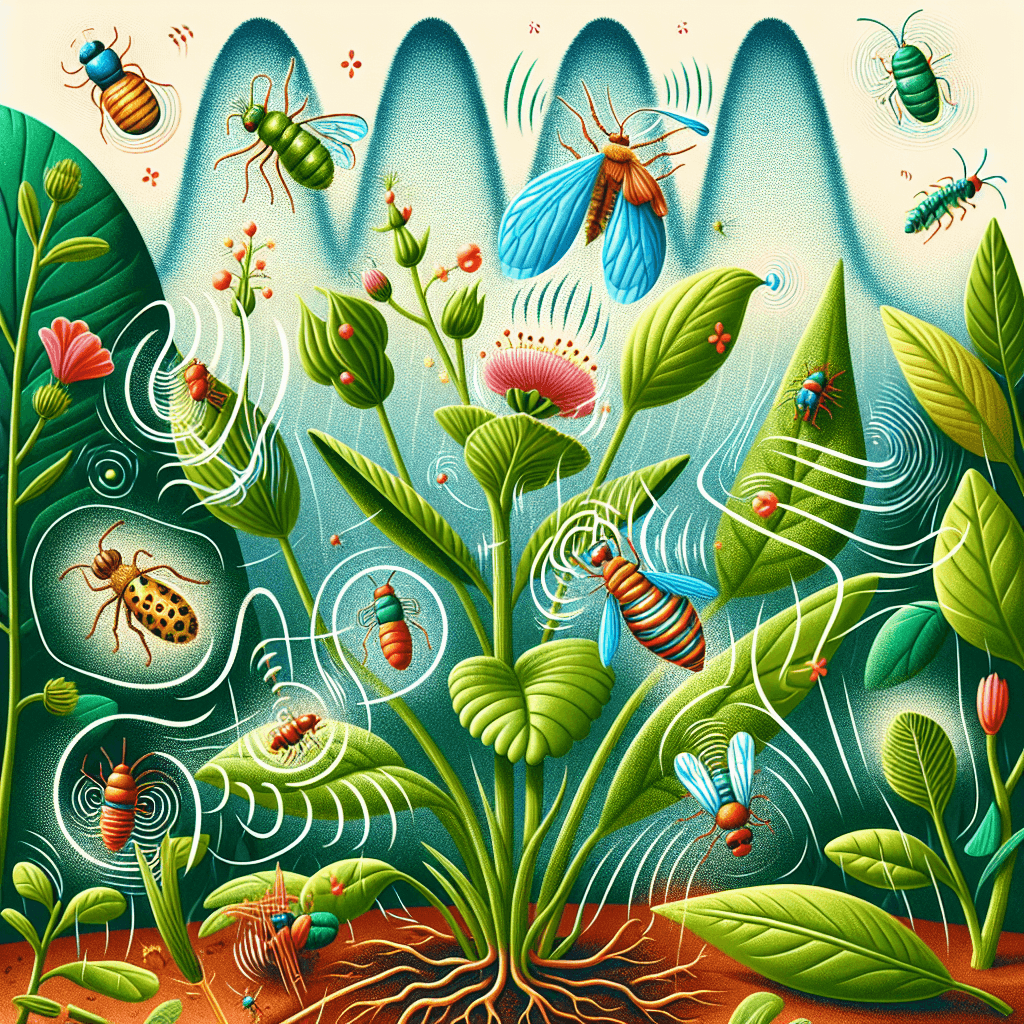The Sound of Being Eaten
The most terrifying sound in nature isn't a predator's roar, but the final, intimate crunch of the kill—a sound your own biology is programmed to fear.


Too Long; Didn't Read
TLDR: The quiet, constant stress and exhaustion you ignore are the sounds of your obligations eating you alive. It is a warning to recognize the signs of burnout and reclaim your boundaries before there is nothing left.
The Green Alarm System: Can Plants Sense the Specific Vibrations of Insects Chewing Them?
Imagine a world where the rustle of leaves isn't just a sign of the wind, but a complex communication network. Plants, often perceived as passive inhabitants of our planet, are increasingly being revealed as highly sensitive organisms, capable of perceiving and responding to their environment in sophisticated ways. This raises a fascinating question: can plants sense the specific vibrations of insects chewing them, effectively hearing their attackers? This blog post delves into the science behind this incredible botanical capability.
Beyond Sight and Smell: An Introduction to Plant Perception
We know plants respond to light, water, and chemical signals in the soil and air. But the idea that they can "hear" or, more accurately, sense specific vibrations, might seem like science fiction. However, plants are equipped with mechanoreceptors – specialized cells that detect physical stimuli like touch, pressure, and, yes, vibrations. While they don't have ears, their entire structure can act as a receptor for vibrational information, and recent research has shown they use this ability in remarkably specific ways, especially when it comes to defense.
Listening to Lunch: How Plants Detect Chewing Vibrations
Groundbreaking research, notably from the University of Missouri, has provided compelling evidence that plants can indeed distinguish the specific vibrations caused by insects chewing on their leaves. In a key study, scientists recorded the minute vibrations caterpillars make as they munch on Arabidopsis thaliana, a small flowering plant often used in research.
They then played these "chewing recordings" back to one set of plants, while another set was exposed to other vibrations, such as those from wind or the sounds of harmless insects. The results were striking:
- Plants exposed to the chewing vibrations subsequently increased their production of chemical defenses, specifically glucosinolates and anthocyanins, which are known to deter herbivores.
- Importantly, plants exposed to other types of vibrations (wind, non-threatening insect sounds) did not show this defensive chemical response.
This demonstrates a crucial point: plants aren't just reacting to any vibration. They seem to be able to discern the specific vibrational signature of a herbivore's feeding activity. It's as if they can identify the "sound" of danger.
The Plant's Defense Strategy: Priming for Attack
When a plant senses these specific chewing vibrations, it doesn't just immediately flood its tissues with defense compounds. Instead, it often "primes" its defenses. This means the plant becomes more sensitive and can mount a faster, stronger defensive response if a real attack occurs.
Think of it like an early warning system. The vibrations signal a potential threat, putting the plant on high alert. If the chewing continues or intensifies, the plant can then rapidly deploy its chemical arsenal to make itself less palatable or even toxic to the munching insect. This specificity is vital because producing defense chemicals is energetically expensive for the plant. By only ramping up defenses in response to genuine threats, plants can conserve resources.
Why is This Vibrational Sensing So Important?
The ability to detect and respond to specific chewing vibrations offers several advantages:
- Early Warning: It allows plants to prepare for an attack before significant damage occurs.
- Resource Efficiency: Plants avoid wasting energy on unnecessary defense responses to benign environmental stimuli.
- Targeted Defense: They can tailor their defenses, potentially even recognizing different types of attackers through their unique vibrational signatures, though more research is needed here.
This sophisticated sensory mechanism underscores the complex co-evolutionary arms race between plants and herbivores. As insects develop ways to feed, plants evolve new ways to detect and deter them.
Conclusion: A World of Whispering Leaves
The evidence strongly suggests that plants can, in fact, sense the specific vibrations of insects chewing them and use this information to mount a targeted defense. This isn't hearing in the human sense, but a highly attuned mechanosensory ability that reveals a hidden layer of interaction in the natural world. Far from being passive, plants are active participants, constantly monitoring their surroundings and responding with remarkable precision. Understanding these intricate "conversations" not only deepens our appreciation for plant life but also opens potential avenues for innovative, ecologically sound approaches to crop protection in the future. The silent world of plants, it turns out, is buzzing with information.


